Collaborating and putting the joy in Judaism
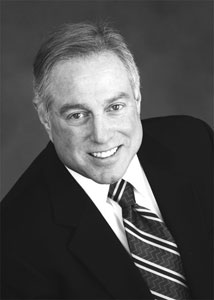 Last week I addressed the Annual Meeting of the Jewish Community Center to talk about a new collaborative “Jewish Life and Learning” program between Federation and the Jewish Community Center. I would like to share these remarks with you so you can understand what we are doing as well. I believe it is a model for other communities to emulate.
Last week I addressed the Annual Meeting of the Jewish Community Center to talk about a new collaborative “Jewish Life and Learning” program between Federation and the Jewish Community Center. I would like to share these remarks with you so you can understand what we are doing as well. I believe it is a model for other communities to emulate.
When at conferences with other Jewish communities around the country, I often share with people how lucky I feel about being the CEO of the Federation in Kansas City. If any of you have ever lived in other Jewish communities, you would be hard pressed to find a community with the kinds of institutional relationships we have in KC. Whether it is the Jewish Funders Council where the Jewish Federation, Jewish Community Foundation, Menorah Legacy and Jewish Heritage Foundations come together; or agencies that share a program and staff as is the case of our Jewish Employment Service (where Jewish Family Service and Jewish Vocational Service have partnered to bring jobs to our Jewish unemployed); or the Rabbinical Association that jointly programs around specific holidays together — we are a community that tends not to let institutional barriers get in our way. We are lucky in Kansas City to have a culture that strives towards cooperation and collaboration
In fact, I just came from a meeting today where we attempted to define that word — collaboration. To paraphrase one of the meeting participants — collaboration is about “all sides having skin in the game… jointly risking one’s reputation…sharing resources, planning and working together to accomplish mutually agreed upon goals.” This new venture that the JCC and the Federation are embarking upon is doing just that. We are learning what it really means to play well in our community sandbox.
This process actually began four years ago — under Bob Grant’s leadership of the JCC and Bill Carr’s of the Federation — when our respective officers first convened to discuss the possibility of closer ties. After the first meeting, we kind of shook our heads and said okay — so now what? We had not really followed Covey principals and thought of what was the “end in mind.” Today under Gary Weinberg’s leadership of the JCC and Miriam Scharf’s leadership of the Federation the staffs and volunteers of our two agencies understand the goal and are moving a powerful agenda forward. A collaborative lay team with Cindy Bodker and Mark Eisemann as the chairs will help oversee and review this process.
As our staffs met to determine what should and could be accomplished, the logical starting point was Jewish education, identity and cultural arts.
Both our institutions have strong professional leadership in these areas and as we both went through a strategic review of the future of our programs, our ideas took shape. A work team guided from JCC staff headed by Jill Maidoff and another representing Federation’s CAJE staff headed by Alan Edelman have been working hard for several months to find common grounds where we can work together and expand the quality of what each other is doing. We also knew that the combined Jewish educational and community experience of Jill and Alan, which is extensive and deep, placed the project in good hands.
This joint effort was not easy at first, what we are doing is almost akin to a merger; we had different cultures, turf to protect, egos to contend with, but in the end, after spending a great deal of time together, we have a very good working staff group. Now let me be clear — not all programs will be done together in these areas but all programs will be open to input from the other side. There will still be some programs that are the JCC’s and others that are just CAJE but more and more you will see and feel the impact of each organization on the other.
For the first time joint grants have been proposed to funders, which we hope will soon see positive results, staffs are meeting regularly and program development and enhancements are under way.
The programs we are collaborating on include those for children, families and adults. They compose an informal Jewish education, culture and identity building platform which I believe is not to be found anywhere else in the country at this moment. Yes, there are Federations that now operate JCC’s and JCC’s and Federations that have merged. Most of these situations have been structural changes driven by scarcer financial resources. Few are motivated beyond the financial reason to look at how effectively they are delivering programming to their community and can they make it better, not just more cost effective. I believe ultimately we are going to do both and will have a better product.
In the coming months you are going to see us make more extensive use of the PJ Library program, including a first time young family Shabbaton. We will create new adult learning opportunities, enhance Jewish aspects of cultural arts so we will not just have a play or musical with hints of Jewish themes but will have programming built around it, including, for example, a “Jewish Mother Month” coinciding with the show “Gypsy.” I could go on but it is just enough to tease you and ask you to stay tuned.
I want to thank my partner in this, Jacob Schrieber, who has had the vision and the desire to put more Jewish in the “J” and his volunteer leadership starting with Gary Weinberg who has provided the muscle to do it. Together we can go from strength to strength and enhance informal Jewish learning and as I have often heard Jacob say — put the joy in Judaism!
Todd Stettner is executive vice-president and chief executive officer of the Jewish Federation of Greater Kansas City. This article originally appeared on the Jewish Federation e-blast and website.



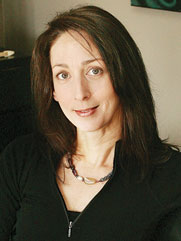 Members of the Kansas City Jewish community took a collective step forward on April 17, with “Powering Our Future: A Community Dialogue.” More than 150 people came to the event, organized by a small group of emerging leaders with an eye on the future of Jewish institutions, organizations and programs.
Members of the Kansas City Jewish community took a collective step forward on April 17, with “Powering Our Future: A Community Dialogue.” More than 150 people came to the event, organized by a small group of emerging leaders with an eye on the future of Jewish institutions, organizations and programs.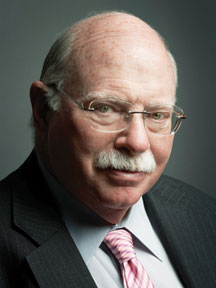 As Israel prepares to begin its 65th year of modern-day independence, there can be no disputing that this nation remains confronted with a myriad of challenges and threats to its very existence. But despite the perceived pall of fear and tension which seem to hang eternally over Israel, I can confidently say, as someone who has been blessed to contribute to its modern renaissance, that Israel’s daily reality is one of hope and promise for a brighter future — a reality in which most Israelis live.
As Israel prepares to begin its 65th year of modern-day independence, there can be no disputing that this nation remains confronted with a myriad of challenges and threats to its very existence. But despite the perceived pall of fear and tension which seem to hang eternally over Israel, I can confidently say, as someone who has been blessed to contribute to its modern renaissance, that Israel’s daily reality is one of hope and promise for a brighter future — a reality in which most Israelis live. Yesterday I met my pen pal of more than nine years. After the death of my father Sam Nussbaum, z”l, in December of 2002, my mother and I were looking at his files of saved paper clippings and correspondences and we came across a letter sent to my father in April of 1989. It was sent to him by Max Garcia, an architect in San Francisco. They shared something very special in common. They were both liberated on May 6, 1945, from the Ebensee Labor camp in Ebensee, Austria. They were liberated by the “F” Company of the 3rd Cavalry Reconnaissance Group commanded by Gen. George S. Patton, Jr.
Yesterday I met my pen pal of more than nine years. After the death of my father Sam Nussbaum, z”l, in December of 2002, my mother and I were looking at his files of saved paper clippings and correspondences and we came across a letter sent to my father in April of 1989. It was sent to him by Max Garcia, an architect in San Francisco. They shared something very special in common. They were both liberated on May 6, 1945, from the Ebensee Labor camp in Ebensee, Austria. They were liberated by the “F” Company of the 3rd Cavalry Reconnaissance Group commanded by Gen. George S. Patton, Jr.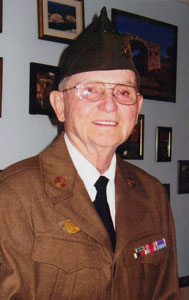 “As we approached on the gravel road to the camp we saw masses of human beings that appeared almost like ghosts standing in mud and filth up to their ankles behind the high wire fence. They were dressed in filthy striped clothes and some in partial clothing barely covering their bodies. They appeared so thin and sickly, it was evident that they were starving. Their bodies were just skin and bones. We stopped our tank and observed for a period of time trying to decide what we would do with the mass of prisoners surrounding our tanks. Both tank crews were hesitant to accept or to make contact with these poor starving individuals. None of us had ever seen human beings in this terrible situation before. We started to toss rations and energy bars to them until our supply was depleted. At first we refused to dismount and wade through the quagmire of mud and around all of the dead bodies. Besides that the stench of all of the dead bodies made it almost unbearable. We had seen terrible sights from combat across Europe but what we were observing was a climax to the things that human beings do to their fellow man. It was beyond anyone’s imagination that such horrible crimes could be committed.
“As we approached on the gravel road to the camp we saw masses of human beings that appeared almost like ghosts standing in mud and filth up to their ankles behind the high wire fence. They were dressed in filthy striped clothes and some in partial clothing barely covering their bodies. They appeared so thin and sickly, it was evident that they were starving. Their bodies were just skin and bones. We stopped our tank and observed for a period of time trying to decide what we would do with the mass of prisoners surrounding our tanks. Both tank crews were hesitant to accept or to make contact with these poor starving individuals. None of us had ever seen human beings in this terrible situation before. We started to toss rations and energy bars to them until our supply was depleted. At first we refused to dismount and wade through the quagmire of mud and around all of the dead bodies. Besides that the stench of all of the dead bodies made it almost unbearable. We had seen terrible sights from combat across Europe but what we were observing was a climax to the things that human beings do to their fellow man. It was beyond anyone’s imagination that such horrible crimes could be committed.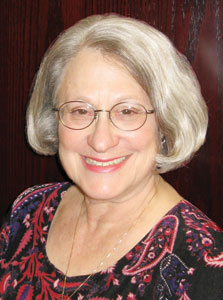 As SAFEHOME’s volunteer manager and Jewish outreach coordinator, I would like to thank the Flo Harris Foundation for funding SAFEHOME’s Jewish Outreach Program this past year. This money, and the foundation’s foresight in understanding the importance of this project, helps SAFEHOME save lives. It helps people survive and overcome domestic abuse, one of those topics that no one wants to talk about publicly. It is so important people understand that tragedies result from domestic violence. It’s even more important for me to emphasize these things can and do happen in the Jewish community.
As SAFEHOME’s volunteer manager and Jewish outreach coordinator, I would like to thank the Flo Harris Foundation for funding SAFEHOME’s Jewish Outreach Program this past year. This money, and the foundation’s foresight in understanding the importance of this project, helps SAFEHOME save lives. It helps people survive and overcome domestic abuse, one of those topics that no one wants to talk about publicly. It is so important people understand that tragedies result from domestic violence. It’s even more important for me to emphasize these things can and do happen in the Jewish community. QUESTION: Even though Passover (Pesach) is just over I would like to ask a seder question. Why do we use a roasted lamb bone on the seder plate? Some people have the tradition of eating lamb and others of not eating lamb at the seder.
QUESTION: Even though Passover (Pesach) is just over I would like to ask a seder question. Why do we use a roasted lamb bone on the seder plate? Some people have the tradition of eating lamb and others of not eating lamb at the seder.